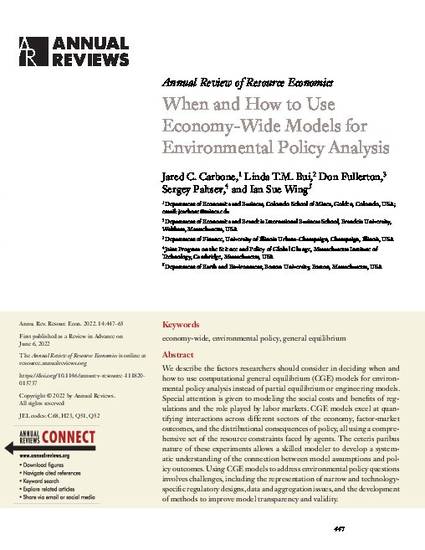
Article
When and How to Use Economy-Wide Models for Environmental Policy Analysis
Annual Review of Resource Economics
(2022)
Abstract
We describe the factors researchers should consider in deciding when and how to use computational general equilibrium (CGE) models for environmental policy analysis instead of partial equilibrium or engineering models. Special attention is given to modeling the social costs and benefits of regulations and the role played by labor markets. CGE models excel at quantifying interactions across different sectors of the economy, factor-market outcomes, and the distributional consequences of policy, all using a comprehensive set of the resource constraints faced by agents. The ceteris paribus nature of these experiments allows a skilled modeler to develop a systematic understanding of the connection between model assumptions and policy outcomes. Using CGE models to address environmental policy questions involves challenges, including the representation of narrow and technology-specific regulatory designs, data and aggregation issues, and the development of methods to improve model transparency and validity.
Disciplines
Publication Date
October, 2022
Citation Information
Jared C Carbone, Linda Bui, Don Fullerton, Sergey Paltsev, et al.. "When and How to Use Economy-Wide Models for Environmental Policy Analysis" Annual Review of Resource Economics Vol. 14 (2022) Available at: http://works.bepress.com/don_fullerton/89/
